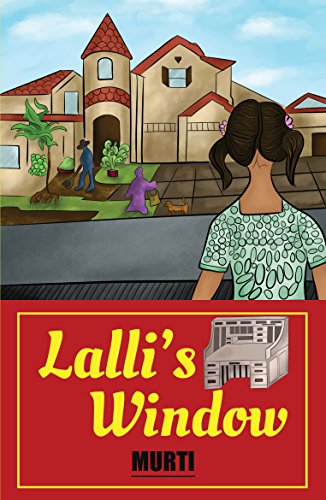My Source of Inspiration

by Exhibiting Author Kamakshi P Murti
When I retired in 2008, I discovered the time and leisure to indulge in what had always been a dream: writing children’s stories and murder mysteries. I soon discovered a distressing absence of South Asian girls as protagonists in children’s books published in the West. Consequently, I created 11-year-old Lalli who faces the world and begins to understand it differently when a freak car accident robs her of her leg. Home-bound and home-schooled during the first year after her accident, Lalli begins to understand friends and neighbors alike through a different lens. The chief inspiration for Lalli was my paternal aunt Lalitha (Lalli is the short form of her name) who graduated as the first female electrical engineer in India in the year 1942. Widowed in the year 1937 and with an infant daughter to look after, she fought these odds by returning to her studies and provided a life-long role-model for me. Another source of encouragement was provided by generations of nieces and nephews who tested my ability to keep them entertained by telling them stories!
My eleven-year-old protagonist Lalli is the stereotypical teenager of immigrant parents from India, experiencing all the exhaustingly confusing moments of cultural stereotyping (“Where are you from?” “Tucson.” “No, really. Where are you from?”) I felt that one of the ways to allow her to confront her own prejudices and those of others was to put her through a traumatic experience. Becoming disabled forces her to understand the pain of those who are marginalized.
Some of the other characters in my book are marginalized in different ways. For example, the character of Jakob Steave, an older Mennonite man who plays Western classical music was for me a way to talk about the universal appeal of music, and to enable Lalli to compare different musical traditions non-judgmentally. Steave’s children Eli, Abel, and Miriam provide through their disfunctionality an alternate reality to Lalli’s understanding of family values and integrity.
My concern about homophobia in the country led to the creation of Ronald Armstrong and Anuraag Kulkarni, a gay couple. Their adoption of a Korean girl Mi-hi and an Indian girl Kumuda provided further fodder for discussing social issues in a less preachy manner.
Lalli’s parents–Nirmala Mantha and Sastri Mantha–gave me the opportunity to question entrenched gender roles. Nirmala is an immigration lawyer, husband Sastri Mantha is a graphic designer who works from home. He also home-schools daughter Lalli during that first year after her accident when she is in a wheelchair.
Lalli’s younger brother Nitin is an interesting example of a South- sian child born in the U.S. whose identity has been forged by a homogeneous understanding of US citizenship. Like many other 8-year-old kids of color, he tends to deny his Asian Indian heritage. But sister Lalli’s accident and her struggle to come to terms with her lost leg makes him less self-absorbed.


